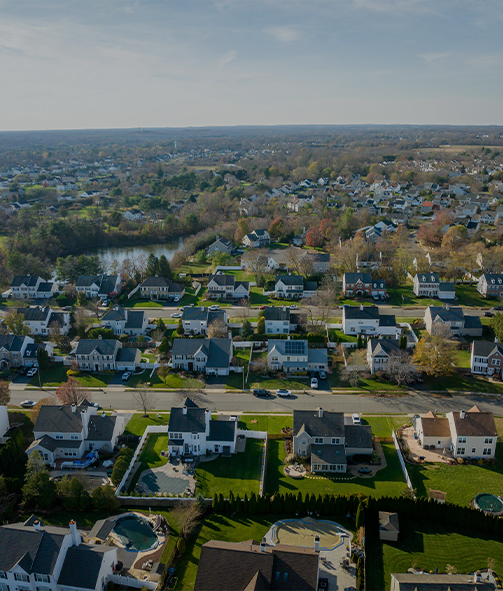Who’s at Fault in an E-Bike vs. Vehicle Collision in New Jersey?
Electric bicycles (or e-bikes) have become a popular way to get around New Jersey. With rising fuel costs and more people looking for eco-friendly ways to commute, e-bikes offer an appealing option. However, their growing presence on roadways and bike paths has led to an increase in accidents and legal questions about who is at fault when collisions occur between e-bike riders and drivers.
If you’ve been involved in an e-bike vs. vehicle crash in Monmouth County, here’s what you need to know about how fault is determined and why it matters for your injury claim.
How New Jersey Classifies E-Bikes
New Jersey law divides e-bikes into three categories based on how they operate. These classifications affect where each type can be used and what rules apply to the rider.
- Class 1: Pedal-assist bikes with a motor that stops assisting at 20 mph.
- Class 2: Throttle-powered bikes that don’t require pedaling and are also limited to 20 mph.
- Class 3: Higher-speed motorized bicycles (typically without pedals) that can go faster and are often treated more like mopeds.
Class 1 and 2 riders don’t need a license, insurance, or registration. They’re allowed on most roads, bike lanes, and trails just like regular bicycles. Class 3 riders must be at least 15 years old, wear helmets, and are restricted from using bike paths unless adjacent to a road or specifically permitted.
Regardless of class, all e-bike riders in Monmouth County must follow the state’s bicycle traffic laws. This includes yielding the right of way, obeying signals and signs, and using front and rear lights at night.
How Fault Is Determined in an E-Bike Collision
Fault in an e-bike vs. vehicle crash is determined by looking at who broke the rules, or who failed to take reasonable care to prevent harm. Investigators and insurance companies consider several factors:
- Did either party ignore a traffic sign or signal?
- Was the e-bike where it was legally allowed to be?
- Did the driver check for bikes before turning or opening a door?
- Was either person speeding or distracted?
- Were the proper signals, lights, or helmet requirements followed?
Let’s say a driver turns right across a bike lane without checking their mirror—fault may fall on the driver. But if the e-bike ran a red light or rode into traffic from the sidewalk, the rider may be to blame.
Common Accident Scenarios
Every crash is different, but some patterns appear often in e-bike cases:
- Dooring incidents: A driver opens a car door into an oncoming e-bike, often the driver’s fault.
- Crosswalk entries: An e-bike enters a crosswalk at high speed from the sidewalk—could be shared fault.
- Improper turns: A driver turns without yielding to an e-bike in a bike lane—the driver may be liable.
- Class 3 e-bike violations: If a Class 3 e-bike is being used where it’s prohibited, the rider’s actions may weigh heavily in fault determination.
Pedestrians and E-Bike Collisions
It’s not just drivers who may be injured in these crashes. Fast-moving e-bikes have also struck pedestrians on sidewalks, crosswalks, and boardwalks.
If an e-bike rider speeds through a pedestrian area or fails to yield, they may be liable for injuries. That said, pedestrians who enter bike paths without looking or who are distracted by phones may also share some blame.
Evidence That Can Support a Claim
To determine fault and recover compensation, strong evidence matters. We help clients gather:
- Police reports
- Scene photos or video (including traffic cams or dash cams)
- App or GPS data from the e-bike
- Eyewitness statements
- Proof of helmet use, lighting, and rider age (if applicable)
- Medical records documenting injuries
Time is a factor, as evidence can disappear quickly. If you’re involved in an e-bike crash, report it, document it, and speak with an attorney as soon as possible.
How New Jersey’s Comparative Fault Rule Affects Your Case
New Jersey follows a modified comparative negligence rule. If you’re partially at fault, you can still recover damages, as long as you’re 50% or less at fault. Your percentage of fault will reduce your compensation.
For example, if you’re awarded $100,000 but found to be 30% at fault, you’d receive $70,000. But if you’re 51% at fault or more, you can’t recover anything.
That’s why having an attorney on your side is so important, especially when the other party’s insurer is trying to shift blame.
Monmouth County E-Bike Accident Attorneys
If you were injured in an e-bike accident in New Jersey, turn to Noonan & McMahon, LLC. We understand e-bike classifications and the tactics insurance companies use to avoid paying fair compensation. Trust our injury attorneys to handle all the details of your claim and fight for the compensation you deserve. Contact us today for a free consultation.
